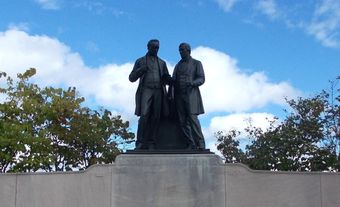A government white paper is a Cabinet-approved document that explains a political issue and proposed legislation to address it. The purpose of a white paper is to introduce a new government policy to test the public’s reaction to it. The name derives from the custom of binding the document in white paper, rather than using a cover page. White papers are different from green papers, which seek public reaction not to new policy but to more general proposals. The most controversial white paper in Canada was issued in 1969; it sought to redefine the relationship between the federal government and Indigenous peoples. (See The 1969 White Paper.)

Role and Purpose
If a government is considering a major policy shift or significant legislation, it may introduce its policy ideas in a white paper. A government white paper is a detailed document that explains an issue, as well as the government’s plan to address it. It is approved by Cabinet and issued by the relevant minister. A white paper has two goals: to educate the public on the issue and the proposed policy change or legislation; and to gauge public opinion toward the government’s plan.
Green Paper
The name white paper is derived from the custom of binding the document in white paper, rather than using a cover page. White papers are different from green papers, which seek public reaction not to new policy but to more general proposals. Traditionally, green papers were printed on green paper to distinguish them from white papers.
However, the distinction between white papers and green papers can be subject to the government’s perspective. Many white papers in Canada have been, in effect, green papers. And at least one green paper, the 1975 Green Paper on Immigration and Population, was released to the public after the government had already drafted legislation on the matter.
Notable Examples
A white paper can be a powerful political tool. Many Canadian governments have employed them. The 1964 White Paper on Defence, for example, was issued by Prime Minister Lester Pearson’s government. It detailed a proposed transformation in defence policy with regard to spending, the organization and size of the Armed Forces, and Canada’s place in Cold War alliances. (See also NATO; NORAD; GATT.) The government of Prime Minister Brian Mulroney released the 1987 White Paper on Tax Reform. It proposed an overhaul of Canada’s tax system, with the aim of making it fairer.
Canada’s most controversial white paper was introduced by Prime Minister Pierre Trudeau’s minister of Indian Affairs and Northern Development, Jean Chrétien. It was based on the 1963 study, A Survey of the Contemporary Indians of Canada: Economic, Political, Educational Needs and Policies. It described decades of discriminatory practices and systemic racism suffered by Indigenous peoples in Canada. Chrétien’s white paper, titled Statement of the Government of Canada on Indian Policy, was released in June 1969 after inconclusive consultations with Indigenous leaders. It proposed to eliminate Indian status; abolish the Indian Act; abolish all treaties; dissolve the Department of Indian Affairs; enable the sale of reserve land, and more. The government believed these proposals would create greater racial equality. Indigenous leaders were nearly unanimous in opposition; some called the proposals a means of cultural genocide. The controversy led to the white paper’s withdrawal in 1970.
See also White Paper on Employment and Income (1945); White Paper on Foreign Policy (1968–70).

 Share on Facebook
Share on Facebook Share on X
Share on X Share by Email
Share by Email Share on Google Classroom
Share on Google Classroom







